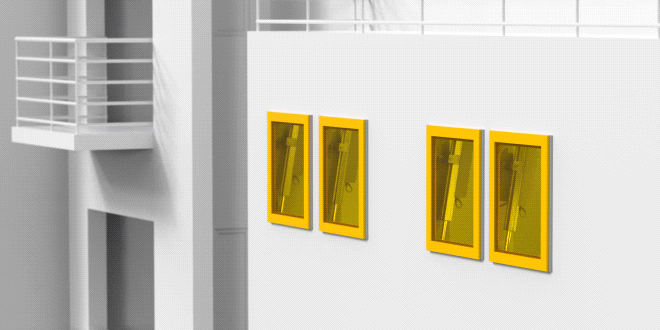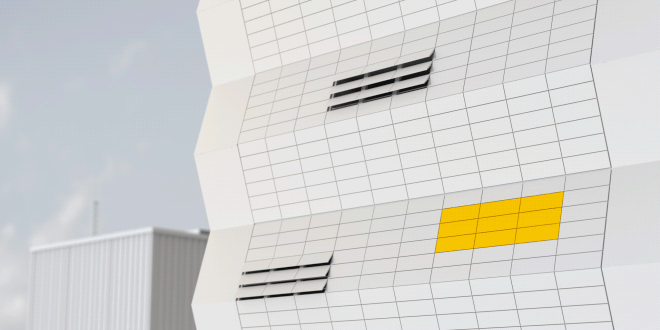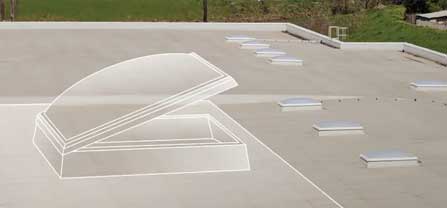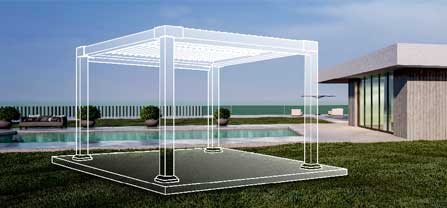2024/07/16
Electric Window Actuators/Openers for Automation
News and Articles
Electric window actuators are a popular alternative to manual openers, offering easier, safer, and more efficient operation of windows, skylights, and vents.
As a global leader in manufacturing window actuators, TiMOTION designs a wide range of electric actuators for various window-opening applications. Regardless of the window's size, weight, or hinge configuration, our electric window actuators can be customized to meet your specific mounting requirements.
Window Actuators from TiMOTION
TiMOTION's electric actuators deliver a tranquil experience with whisper-quiet, seamlessly smooth operation tailored for different applications. For natural ventilation, the following models are available:
-
Electric Window Actuators for Natural Ventilation
TiMOTION’s JP series inline actuators are durable solutions designed for compact spaces.
The JP4, which supports loads up to 4,500N, is similar to the JP3, which supports loads up to 2,000N. However, the JP4 is specifically designed for industrial applications that require higher load capacities and faster speeds.
Both models are UL73 recognized, and optional position feedback sensors and IP69K rating make the JP series suitable for harsh environments.
JP5 and JP6 in-line linear actuators are ideal for home and commercial applications requiring compact installation spaces. The JP5 supports loads up to 1,500N, while the JP6 handles up to 3,000N.

The VN series linear actuator is specifically designed for industrial ventilation applications, helping to quickly remove smoke, heat, and toxic gases from buildings during emergencies.
The VN1, crafted from premium aluminum, is ideal for fall protection systems and greenhouses. It comes with a 12V or 24V DC motor option and other intelligent functions, like a safety nut, window seal mechanism, and the latest T-Smart technology.
The VN3 series has a higher load capacity compared to the VN2, with the ability to handle up to 3,000N for both push and pull, while the VN2 series supports a maximum load of 500N.
-
Electric Window Actuators for Sun Shading Louvers
The TA2 series linear actuator is compact, robust, and capable of handling loads up to 1,000N (push/pull), making it ideal for small spaces without sacrificing performance. The TA2P model, while maintaining the same compact size, features a more powerful motor, supporting loads up to 3,500N and offering multiple feedback sensor options.
The TA16 series, similar in size, is designed for low-noise applications and features optional IP66 protection and Hall sensors for position feedback, with certifications such as IEC60601-1 and UL962.

What is a Window Actuator?
A window actuator, also known as an automatic window opener, is a device designed to automate the opening and closing of windows. By pressing a button, users can remotely activate a motor that moves the window mechanism, making operation easier, safer, and more efficient.
To better understand how a window actuator system works, read more about the components that function inside an electric linear actuator.
Different Types of Window Actuators
Before you select the right window openers for your project, it’s important to examine current window configurations, including window orientation, sizes, weight, and direction of opening and closing, as they are not all the same.
All these window configurations will influence the type of actuators you choose. Please continue reading to understand better the three main electric window actuator types and how they work.
-
Linear Actuators:
-
Rod Actuators
Rod actuators are commonly used in various industrial and commercial applications where precise linear movement is required.
This window actuator features an extendable rod mounted on a track, enclosed in an outer casing. When the rod receives energy from the electric motor, it extends. The rod, attached to the window, causes the window to open as it extends.
They are known for their precision and versatility, providing higher forces and more accurate positioning than other types of actuators. Their compact design makes them suitable for a wide range of linear motion applications, ensuring smooth and efficient window operation.
* TiMOTION’s electric actuators belong to the “Rod” category.
-
Rack Actuators
This type of window actuator is ideal for heavy skylights and domes due to its high force output.
It uses a rack and pinion mechanism to convert rotary motion into linear motion. The pinion, a circular gear, engages with a linear bar equipped with teeth (the rack). When the pinion rotates, the rack moves, converting the rotational motion into linear motion.
In window openers, the rack is housed in an external casing and attached to the window. As the pinion moves, the rack pushes outward, opening the window.
-
-
Chain Actuators:
Chain actuators are commonly used on vertical windows and are popular for general domestic applications. Compared to linear actuators, they have less push and pull force. However, despite their lower force, chain actuators are favored for their simple and quick operation in everyday use.
Chain actuators function similarly to rack actuators, using a chain that engages sprockets on a drive shaft inside an external casing. As the sprockets turn, the chain links rotate at a 90-degree angle, becoming rigid and straight, which makes them resistant to tension and compression. When the chain extends, it opens the window; when it retracts, the window closes.
-
Folding Arm Actuators:
Also known as folding arm actuators, these are designed for side-hung windows or doors that require a 90-degree opening. They can be configured to open inward, outward, or both ways.
The actuator uses a motorized folding arm attached to the window. Starting in a folded position, the arm unfolds when powered by the motor, opening the window. To close the window, the arm folds back to its original position.
Electric window actuators, or openers, offer practical solutions for automating windows, making them exceptionally useful in modern building designs.
Benefits of Using Electric Window Actuators
Electric window actuators offer numerous benefits that make them a valuable addition to modern buildings, contributing to both the comfort and safety of their occupants.
-
Automation and Ease of Use
One of the primary benefits of electric window actuators is the automation they provide. With just the press of a control button/ panel, windows can be opened or closed effortlessly, eliminating the need for manual operation. This ease of use is particularly advantageous for windows in hard-to-reach places, such as skylights or high windows.
-
Improved Ventilation and Air Quality
By automating the windows in various degrees simultaneously, these actuators facilitate better air circulation in reducing indoor pollutants, regulating humidity levels, and maintaining a fresh environment. This is particularly beneficial in settings like offices, schools, and hospitals where air quality can directly impact health and productivity.
-
Enhanced Safety Features
Many actuators are integrated with smoke ventilation systems or building management systems (IBMS) that automatically open windows to release smoke and heat. This provides a safer evacuation route and helps prevent fire spread, ensuring efficient emergency protocols.
6 Key Features to Look for in a Window Actuator
When selecting a window actuator, it’s important to consider the installation environment (indoor or outdoor), temperature conditions, frequency of use, and specific window type. These factors will determine the appropriate specifications for the electric actuator. Here are the key features to look for:
-
Load Capacity
The first criterion to consider when choosing a window actuator is the load it needs to push or pull. The load capacity of a window actuator ranges from 1 to 10,000N. This criterion defines the nature of the components and the safety functions required.
Additionally, the direction in which the actuator will operate should also be considered—whether it will pull or push, and move inward or outward—along with the distance it will cover.
If you have questions about how much load capacity for your project, feel free to contact us. Our experts are available to guide you in selecting the most suitable window actuator based on your specific requirements.
-
Speed
Actuators can operate at speeds ranging from 1 to 60mm/s. The desired speed of movement is a fundamental criterion in selecting an actuator. Not all windows are compatible with high speeds, and fast speeds with a high load can cause premature wear and impact the actuator’s lifespan. Each actuator has a speed and load limit that must not be exceeded to avoid damage.
-
Voltage
Common voltage options are 12V, 24V, and 110 to 240V. The choice of voltage depends on the power supply available and the specific requirements of the installation.
-
Stroke
The stroke refers to the distance the actuator rod can extend. Window actuators come with different stroke lengths, ranging from 25 to 1000mm. The stroke is customizable and determines the overall size of the actuator. A longer stroke means a larger actuator.
-
Installation Dimensions
The retracted length, or installation size, is the space needed to install the actuator. It is determined by the required stroke distance. For example, the installation dimension is typically greater than or equal to the stroke length plus 210mm.
For a top-hung outward opening window, if the desired stroke length is 290mm, the installation dimension will be 500mm (290mm stroke length + 210mm).
-
Durability and Weather Resistance (IP Ratings)
Consider the environment where it will be mounted. Look for actuators with IP ratings ranging from IP54 to IP69K. Determine whether the actuator will operate indoors or outdoors and if it will be exposed to dust, solid contaminants, or moisture. These environmental factors will influence the necessary IP rating to ensure reliable operation.
Considering these features will help you select the most suitable window actuator for your specific needs, ensuring reliable and efficient performance.
Related article: How To Choose An Electric Linear Actuator?
Why Choose TiMOTION for Your Window Actuator Needs?
Window types vary from home to home, and it’s common to face the problem of not finding a suitable window actuator. TiMOTION offers a comprehensive range of electric window actuators designed to meet the diverse needs of various applications. Our products include JP Series, VN Series, and TA Series each tailored for specific uses such as skylights, façade windows, and louver systems.
We provide tailor-made solutions that cater to your unique requirements, ensuring that our actuators fit seamlessly into your projects and deliver optimal performance.
At TiMOTION, quality and innovation are at the heart of everything we do. We are dedicated to producing actuators that not only meet but exceed industry standards.
Can’t find what you’re looking for? No worries.
These are just our standard actuator specifications. Contact us today to discuss your window actuator solutions with our experts' guidance.
Frequently Asked Questions (FAQs)
-
What is a Window Actuator?
A window actuator is a device that automates the opening and closing of windows by converting electrical energy into mechanical motion. This allows for remote or automatic control of windows, enhancing convenience, safety, and energy efficiency in buildings.
-
What Are the Typical Power Requirements for Window Actuators?
Common voltage options are 12V, 24V, and 110 to 240V. The choice of voltage depends on the power supply available and the specific needs of the installation.
-
How Do I Choose the Right Window Actuator for My Project?
Choosing the right window actuator involves considering several factors: Load capacity, Speed, Stroke Length, Installation environment, Durability, and IP rating. Consult with our expert can help you make the best choice.
-
Are Electric Window Actuators Safe to Use?
Yes, electric window actuators are designed with safety features to ensure secure operation. These features include overload clutches, PTC thermistors, and safety nuts. Additionally, many actuators can be integrated with smoke ventilation systems for enhanced safety in emergencies.
-
Can Window Actuators Be Integrated with Smart Home Systems?
Yes, many window actuators can be integrated with smart home systems. TiMOTION actuators, for instance, can be connected to intelligent building management systems (IBMS) for seamless control and enhanced functionality.























